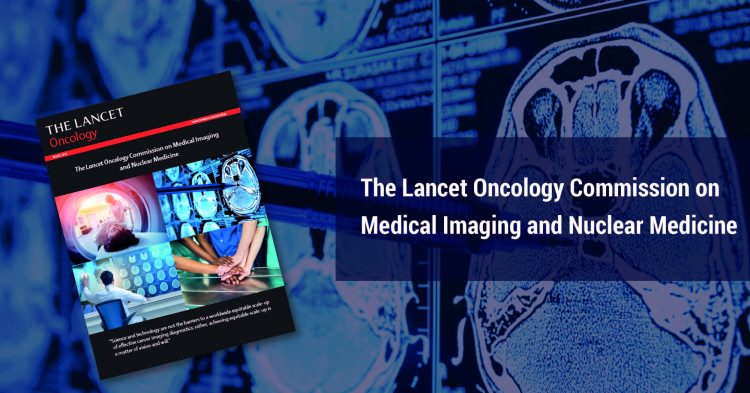Scaling up access to nuclear medicine and medical imaging services would avert nearly 2.5 million cancer deaths worldwide by 2030 and yield global lifetime productivity gains of USD 1.41 trillion – a net return of over USD 200 per USD 1 invested, a new study co-authored by the International Atomic Energy Agency (IAEA) shows.
The Lancet Oncology Commission on Medical Imaging and Nuclear Medicine report, published today during the European Congress of Radiology, reviews data collected under the IAEA IMAGINE database in 211 countries, territories, and principalities, and reveals great disparities in imaging infrastructure between high- and low-income countries.
“Medical imaging is essential to cancer care, but unequal access to these life-saving technologies remains staggering,” IAEA Director General Rafael Mariano Grossi said in a comment to the Commission report. “We know that health systems endowed with the correct tools deliver better results and that low- and middle-income countries lack these.”
Diagnostic imaging tools are essential to provide high-quality care for conditions ranging from non-communicable diseases to COVID-19, trauma, and pregnancy complications.
In high-income countries, they are vital in the management of cancer, and are used to evaluate the location and spread of the disease and to select, plan and monitor treatment options such as surgery, chemotherapy, and radiotherapy.
Imaging equipment includes X-rays, computed tomography (CT) scans and mammography, as well as procedures using radiotracers, such as positron emission tomography (PET) or single-photon emission computed tomography (SPECT), along with non-ionizing radiation techniques like ultrasound and magnetic resonance imaging (MRI).
The report reveals significant disparities in access to imaging tools around the world: at least five countries in Africa do not have a single CT unit, and one CT scanner serves on average 25,000 people in high-income but 1.7 million people in low-income countries. The gap in access to more sophisticated procedures, such as PET scans, is even greater: in high-income countries, one PET scanner serves 300,000 people compared with 167 million in lower-income settings.
The Commission’s analysis also showed marked differences between countries in the number of trained medical imaging specialists but noted that technological advances in the field – such as artificial intelligence (AI), teleradiology, and mobile and ultraportable imaging devices – could offer unprecedented opportunities to improve training and services the world over.
“The Lancet Commission is the first-ever comprehensive effort to assess imaging and nuclear medicine needs worldwide,” said May Abdel-Wahab, joint lead author and Director of the IAEA’s Division of Human Health. “The report presents a compelling case to scale up access to improve patient care, with substantial health and economic benefits.”
All countries worldwide would realize productivity gains, net benefits and investment returns by ramping up imaging procedures, the Commission said, but low- and middle-income countries (LMICs) would benefit the most.
With the global cancer burden increasing at an alarming rate, the Commission proposes several actions to enhance access to imaging equipment and to develop a qualified workforce to tackle the disease globally. These include a call for increased funding, incorporating medical imaging services in universal health coverage, as well as investments in education, training and to advance research.
The Lancet Oncology Commission on Medical Imaging and Nuclear Medicine was established with IAEA support in 2018. “The aim was to provide data and guidance to catalyze sustainable improvement of medical imaging and nuclear medicine services for cancer management, particularly in LMICs,” said co-lead author Hedvig Hricak from Memorial Sloan Kettering Cancer Center, USA.
The IAEA supports countries in the fight against cancer through the provision of equipment, training and technical expertise. The Agency works with several partners to expand diagnostic imaging capabilities and can spearhead global efforts to unlock resources and improve nuclear and radiation medicine services where this is most needed. “Collaboration is strength,” IAEA Director General Grossi said.


